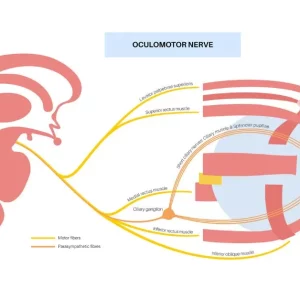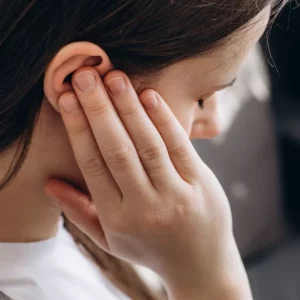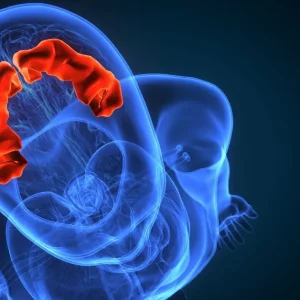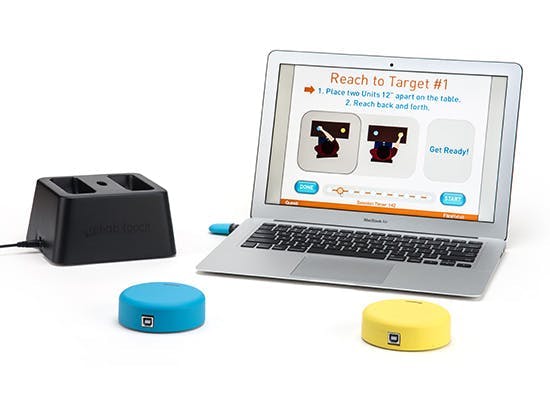Brain injuries can cause a wide range of physical and cognitive challenges—and vision is no exception. One of the lesser-known but highly impactful effects of traumatic or acquired brain injury is accommodative dysfunction, a vision condition that affects the eye’s ability to focus. While this may seem like a minor problem, it can significantly interfere with daily activities like reading, using a phone, or working at a computer.
In this article, we break down what accommodative dysfunction is, how brain injury can affect visual focusing, and what treatment options can help improve quality of life.
What Is Accommodative Dysfunction?
Accommodation is the eye’s ability to focus on objects at different distances—especially near ones. This function depends on the ciliary muscles, which adjust the shape of the eye’s lens so we can shift focus clearly from far to near (or vice versa).
In addition to the ciliary muscles helping to thicken the lenses of the eyes, focusing on nearby objects also requires pupil constriction and eye convergence (inward rotation). These three functions occur simultaneously and reflexively when focusing on nearby items.
Accommodative dysfunction occurs when this system is disrupted. After a brain injury, the communication between the brain and the eyes can become impaired, making it difficult to maintain or shift visual focus. As a result, people may experience blurred vision, fatigue, or difficulty with tasks that involve sustained attention.
The Link Between Vision and Cognitive Recovery
While exact numbers vary, studies show that nearly 43% of TBI survivors experience accommodative dysfunction, and between 2 and 20% of the general population is also affected. Visual function is deeply connected to cognitive function. Impaired accommodation can hinder reading, working memory, and even balance—making the overall recovery process more challenging. In children and adults alike, treating accommodative dysfunction can lead to significant improvements in:
- Reading fluency and comprehension
- Task persistence
- Visual memory
- Comfort during daily activities
- General quality of life
That’s why vision is a key piece of many post-TBI rehabilitation programs.
Why Does Brain Injury Affect Accommodation?
The visual system is highly complex and involves multiple areas of the brain. Accommodation relies on a feedback loop involving various areas of the brain and eyes, including the ciliary muscles, the midbrain, and the cranial nerves. When any of these components are affected by injury—whether from trauma, stroke, or another type of brain injury—the ability to focus can be impaired.
Common types of brain injury that can lead to accommodative dysfunction include:
- Concussions (mild traumatic brain injuries)
- Moderate to severe traumatic brain injuries (TBIs)
- Strokes affecting the occipital lobe or brainstem
- Anoxic brain injury (caused by lack of oxygen)
- Brain tumors or surgery involving visual pathways
In fact, studies suggest that 31-47% of individuals with brain injury may experience accommodative problems as part of a broader set of visual deficits.
Types of Accommodative Dysfunction After Brain Injury
There are several specific forms of accommodative dysfunction, and any of them may appear following a brain injury:
1. Accommodative Insufficiency
This is the most common form of accommodative dysfunction after brain injury. It involves difficulty focusing on close objects and maintaining clarity over time.
Example: A person may try to read a book but find the words become blurry or doubled within minutes.
2. Accommodative Excess
Here, the eyes over-focus or get “stuck” in a near-focus mode. This may also involve accommodative spasms and often causes blurry distance vision after prolonged near vision work.
Example: After texting on a phone for 10 minutes, looking up to watch TV becomes difficult.
3. Accommodative Infacility
This form involves trouble shifting focus quickly between near and far objects. It can slow down tasks like copying notes from a screen or navigating busy environments.
Example: A student with a brain injury may take extra time to switch from looking at their notebook to the teacher.
Accommodative Dysfunction Symptoms to Watch for After Brain Injury
Recognizing accommodative dysfunction in individuals recovering from brain injury can be difficult—especially when cognitive or physical symptoms are more prominent. However, addressing vision problems early can support better recovery outcomes.
Here are some key symptoms to look for:
- Blurred vision at near or far distances
- Headaches, especially during reading or screen use
- Visual fatigue
- Sensitivity to light
- Trouble concentrating on visual tasks
- Difficulty shifting focus from one distance to another
- Avoidance of near work
- Slower reading speed or comprehension
In some cases, these symptoms are mistakenly attributed to cognitive or attention problems, when they are actually rooted in visual dysfunction.
How Is Accommodative Dysfunction Diagnosed?
A standard vision test may not be enough to detect accommodative dysfunction after brain injury. Diagnosis requires a neuro-optometric evaluation, which includes specialized tests to assess how the eyes focus, track, and work together.
Tests may include:
- Accommodative amplitude and facility testing
- Dynamic retinoscopy
- Near point of accommodation
- Binocular vision assessments
- Functional vision questionnaires specific to brain injury
An optometrist or neuro-optometrist trained in post-brain injury care can provide a proper diagnosis and recommend an individualized treatment plan.
Treatment Options for Post-TBI Accommodative Dysfunction
Treatment for accommodative dysfunction after brain injury typically involves a combination of therapeutic approaches and compensatory strategies, depending on the severity and type of dysfunction.
1. Neuro-Optometric Vision Therapy
Vision therapy is often the cornerstone of treatment. It involves a series of customized exercises designed to restore normal focusing function and visual efficiency. These programs can be particularly effective for individuals recovering from brain injury.
Therapy may include:
- Near-far focusing exercises
- Hart charts
- Lens flipper drills
- Activities to improve eye teaming and visual tracking
Most programs take place under the supervision of a neuro-optometrist and may include at-home exercises as well.
2. Prescription Lenses
Temporary or long-term use of specialty glasses may be recommended to reduce strain and improve clarity. These may include:
- Low-powered reading glasses
- Bifocals or progressive lenses
- Prism lenses, which help correct related issues like convergence insufficiency
- Tints or filters to reduce light sensitivity and visual overstimulation
3. Adaptive Strategies for Daily Life
Alongside clinical treatment, small adjustments can help reduce visual strain in everyday settings:
- Use larger font sizes and high-contrast materials
- Follow the 20-20-20 rule: every 20 minutes, look 20 feet away for 20 seconds
- Reduce screen time or use blue light filters
- Ensure proper lighting and posture when reading or working
- Break up tasks into short intervals with rest in between
4. Multidisciplinary Rehabilitation
Since accommodative dysfunction can affect learning, memory, and daily functioning, collaboration between eye care professionals, occupational therapists, and speech-language pathologists can be especially helpful. For example:
- OTs may help integrate vision exercises into daily tasks
- SLPs may work on visual attention as part of reading or communication therapy
Accommodative Dysfunction Outlook and Recovery After Brain Injury
With the right treatment, most individuals with post-brain injury accommodative dysfunction see noticeable improvement—especially when therapy is started early. While progress can vary, many people experience a return to normal or near-normal visual function over time.
Consistency with therapy, regular follow-ups, and awareness of visual strain are all part of long-term management.
Can a concussion cause focusing problems?
Yes. Even mild brain injuries like concussions can disrupt the visual system and lead to accommodative issues such as blurry vision, headaches, or difficulty concentrating on near tasks.
Are accommodative problems permanent after brain injury?
Not always. With vision therapy and supportive strategies, many people regain their focusing ability. Early treatment leads to better outcomes.
How do I know if vision therapy is right for me?
If you’ve had a brain injury and notice visual symptoms (blurry vision, eye strain, difficulty reading), a neuro-optometric evaluation can determine if vision therapy would help.
Is accommodative dysfunction related to double vision?
It can be. While accommodative issues affect focus, they often occur alongside binocular vision problems that can cause double vision. A full vision assessment can clarify the cause.
Accommodative Dysfunction and Brain Injury – Final Thoughts
Accommodative dysfunction after brain injury may not be the first symptom you notice—but it’s one that can quietly affect your recovery journey. Whether you’re struggling to read, work, or simply focus on daily tasks, don’t overlook your vision.
With proper diagnosis and targeted therapy, most individuals can experience significant improvement. If you or a loved one is recovering from a brain injury and facing visual challenges, consult a neuro-optometrist for a personalized care plan.









